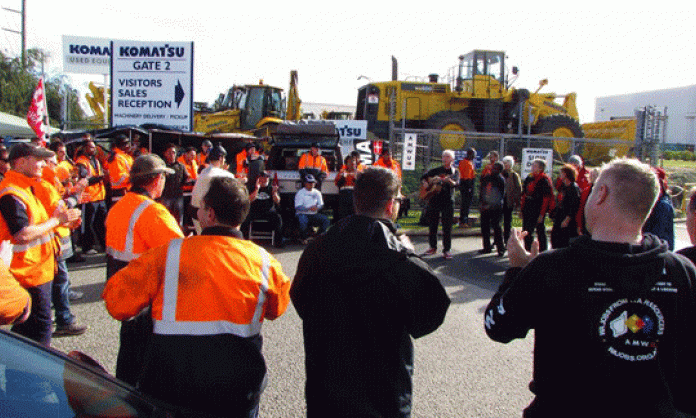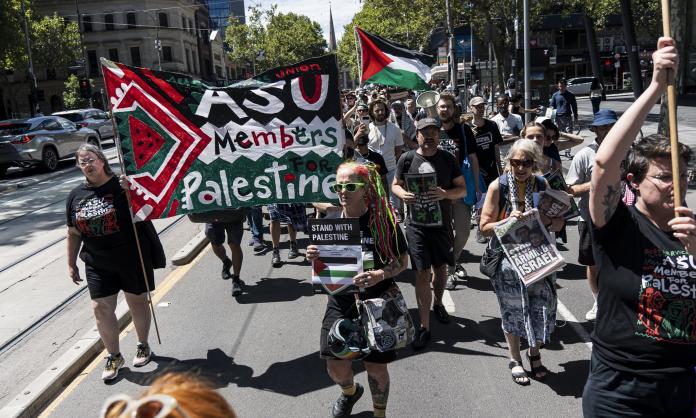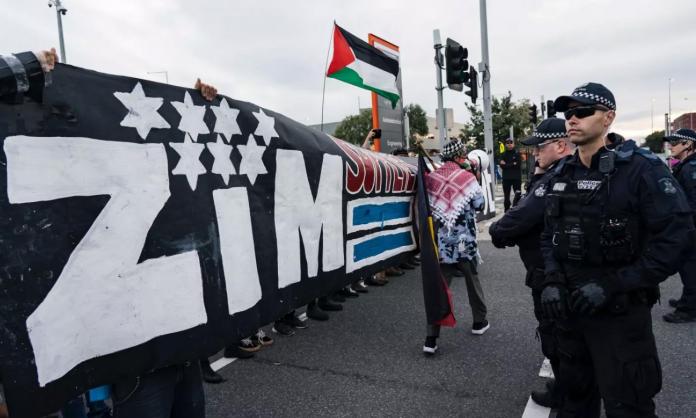Komatsu is the second largest manufacturer of large earth moving, mining and construction machinery in the world. With many mining expansion projects coming to an end, it’s estimated by the industry that 26,000 jobs have been lost in the mining sector over the last 12 months.
Against this backdrop, Komatsu bosses in Australia thought they’d give their workers a bit of a kicking. They underestimated how determined their workforce was to hang on to conditions and entitlements and remain defiantly union.
The Komatsu workshop in Welshpool, Western Australia, has the highest rate of unionisation in the state. More than 95 percent of workshop staff (mechanical fitters, boilermakers, electricians, assemblers, spray painters and service technicians) are in the union (the Australian Manufacturing Workers Union).
Komatsu has tried in the past to undermine the union: first with casual workers and then with workers from the Philippines on 457 visas. Each attempt to sow division strengthened the unity of the workforce. Delegates made it a priority to organise the newest and most vulnerable sections of the workforce.
Speaking to Red Flag, AMWU delegate Lindsay Morton said that the latest negotiations for a collective agreement were an exercise in psychological warfare and the toughest in his 14 years there. “The fight really started 18 months ago, when we had a memorandum of understanding forced on us which meant agreeing to a wage freeze in exchange for no redundancies.”
That wasn’t enough for Komatsu’s HR department. In these negotiations, the bosses wanted to remove rostered days off and to pay wages fortnightly instead of weekly. They also wanted to be able to force people to take annual leave for workshop shutdowns, and a dispute resolution process that would have locked the union out of representing its members – a clause that many manufacturing firms have been able to get in recent years.
After a series of fraught negotiations, the workers unanimously resolved to implement rolling strikes, lifting and loading bans, overtime bans and picketing.
The picket line was staffed by workers and their families. There was singing, courtesy of WA’s Working Choices Choir and T’ai-Chi, which held up operations by blocking the gates. Critically, the service technicians struck, leaving Komatsu unable to meet the needs of its customers.
“All the blokes really got stuck in; they were really staunch and held firm, despite Komatsu’s intimidation and threats. The strike built more unity than we’ve ever experienced before. Actually, we had a lot of fun, and to be honest, we’ll probably miss the days we were out on strike. It’s the only time we felt we could be ourselves”, says Morton.
The company didn’t know how to respond. At the 11th hour, the HR manager running negotiations pulled everything off the table and demanded that discussions start from scratch. The workers didn’t budge, and eventually Komatsu moved him aside and put an offer on the table that secured all existing conditions and provided a pay rise of 10.25 percent over three years, with back pay from April.
For the workers, there was more at stake than pay and conditions. “It became a matter of principle”, says Morton. “We couldn’t stand the way we were being treated. Komatsu have to respect that we are the ones who do the work and that we have a right to set the terms and conditions of our labour through our union.”
The Komatsu workers show that the decline in unionisation levels can be arrested with a fighting strategy. They have set a benchmark for all manufacturing workers.










